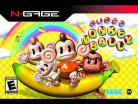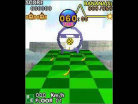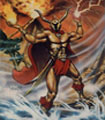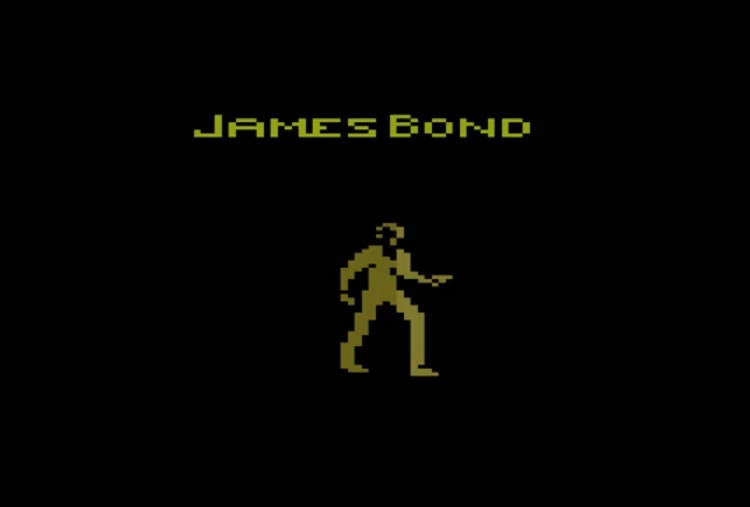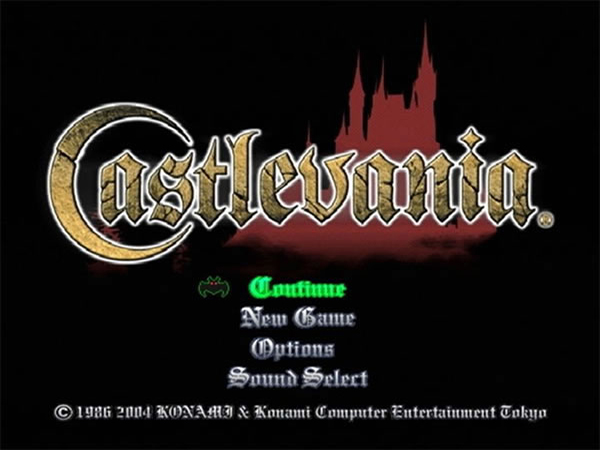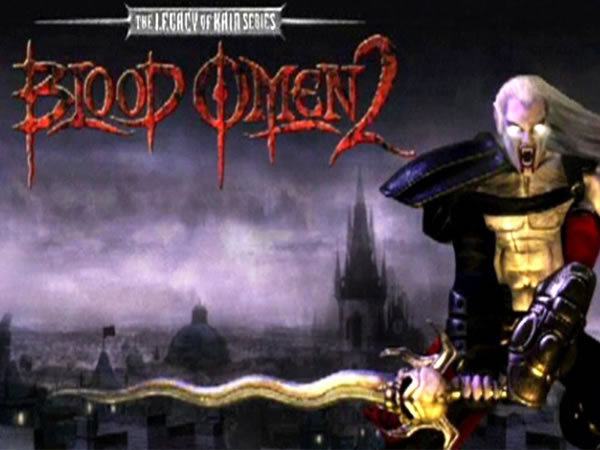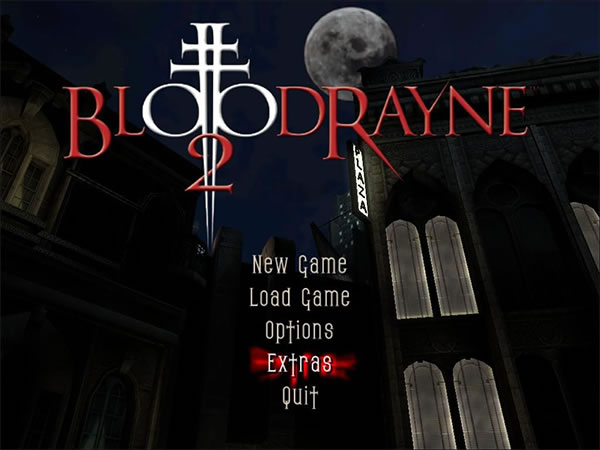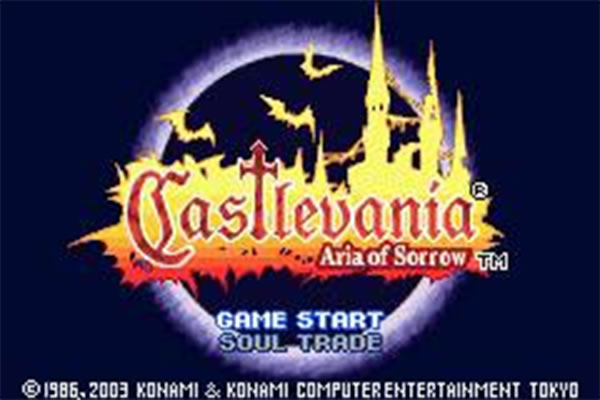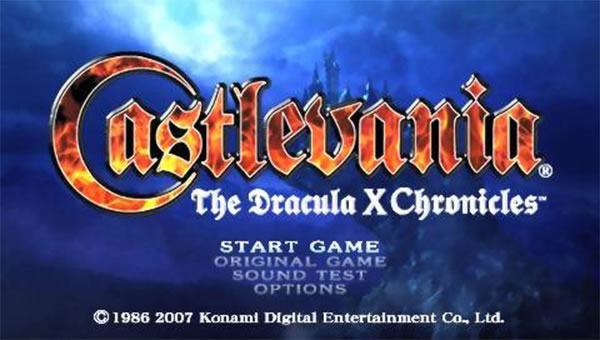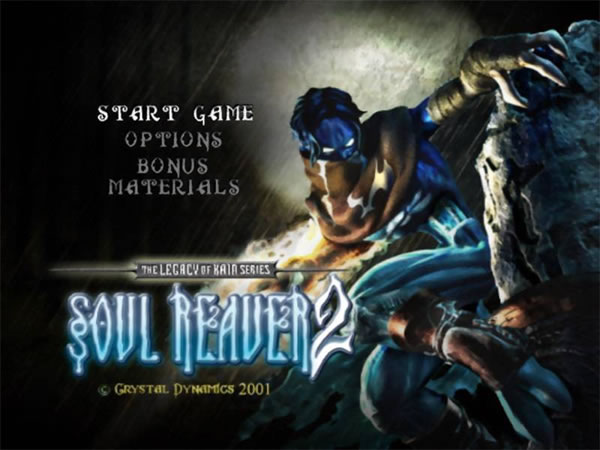- CLASSIC MAGAZINES
- REVIEW CREW
A show recapping what critics thought back
when classic games first came out! - NEXT GENERATION'S BEST & WORST
From the worst 1-star reviews to the best
5-stars can offer, this is Next Generation! - NINTENDO POWER (ARCHIVE)
Experience a variety of shows looking at the
often baffling history of Nintendo Power! - MAGAZINE RETROSPECTIVE
We're looking at the absolutely true history of
some of the most iconic game magazines ever! - SUPER PLAY'S TOP 600
The longest and most ambitious Super NES
countdown on the internet! - THEY SAID WHAT?
Debunking predictions and gossip found
in classic video game magazines! - NEXT GENERATION UNCOVERED
Cyril is back in this spin-off series, featuring the
cover critic review the art of Next Generation! - HARDCORE GAMER MAGAZING (PDF ISSUES)
Download all 36 issues of Hardcore Gamer
Magazine and relive the fun in PDF form!
- REVIEW CREW
- ELECTRONIC GAMING MONTHLY
- ELECTRONIC GAMING MONTHLY RANKS
From Mario to Sonic to Street Fighter, EGM
ranks classic game franchises and consoles! - ELECTRONIC GAMING MONTHLY BEST & WORST
Counting down EGM’s best and worst reviews
going year by year, from 1989 – 2009! - ELECTRONIC GAMING BEST & WORST AWARDS
11-part video series chronicling the ups and
downs of EGM’s Best & Worst Awards!
- ELECTRONIC GAMING MONTHLY RANKS
- GAME HISTORY
- GAME OVER: STORY BREAKDOWNS
Long-running series breaking down game
stories and analyzing their endings! - A BRIEF HISTORY OF GAMING w/ [NAME HERE]
Real history presented in a fun and pithy
format from a variety of game historians! - THE BLACK SHEEP
A series looking back at the black sheep
entries in popular game franchises! - INSTANT EXPERT
Everything you could possibly want to know
about a wide variety of gaming topics! - FREEZE FRAME
When something familiar happens in the games
industry, we're there to take a picture! - I'VE GOT YOUR NUMBER
Learn real video game history through a series
of number-themed episodes, starting at zero! - GREAT MOMENTS IN BAD ACTING
A joyous celebration of some of gaming's
absolute worst voice acting!
- GAME OVER: STORY BREAKDOWNS
- POPULAR SHOWS
- DG NEWS w/ LORNE RISELEY
Newsman Lorne Riseley hosts a regular
series looking at the hottest gaming news! - REVIEW REWIND
Cyril replays a game he reviewed 10+ years
ago to see if he got it right or wrong! - ON-RUNNING FEUDS
Defunct Games' longest-running show, with
editorials, observations and other fun oddities! - DEFUNCT GAMES QUIZ (ARCHIVE)
From online quizzes to game shows, we're
putting your video game knowledge to the test!- QUIZ: ONLINE PASS
Take a weekly quiz to see how well you know
the news and current gaming events! - QUIZ: KNOW THE GAME
One-on-one quiz show where contestants
find out if they actually know classic games! - QUIZ: THE LEADERBOARD
Can you guess the game based on the classic
review? Find out with The Leaderboard!
- QUIZ: ONLINE PASS
- DEFUNCT GAMES VS.
Cyril and the Defunct Games staff isn't afraid
to choose their favorite games and more! - CYRIL READS WORLDS OF POWER
Defunct Games recreates classic game
novelizations through the audio book format!
- DG NEWS w/ LORNE RISELEY
- COMEDY
- GAME EXPECTANCY
How long will your favorite hero live? We crunch
the numbers in this series about dying! - VIDEO GAME ADVICE
Famous game characters answer real personal
advice questions with a humorous slant! - FAKE GAMES: GUERILLA SCRAPBOOK
A long-running series about fake games and
the people who love them (covers included)! - WORST GAME EVER
A contest that attempts to create the worst
video game ever made, complete with covers! - LEVEL 1 STORIES
Literature based on the first stages of some
of your favorite classic video games! - THE COVER CRITIC
One of Defunct Games' earliest shows, Cover
Critic digs up some of the worst box art ever! - COMMERCIAL BREAK
Take a trip through some of the best and
worst video game advertisements of all time! - COMIC BOOK MODS
You've never seen comics like this before.
A curious mix of rewritten video game comics!
- GAME EXPECTANCY
- SERIES ARCHIVE
- NINTENDO SWITCH ONLINE ARCHIVE
A regularly-updated list of every Nintendo
Switch Online release, plus links to review! - PLAYSTATION PLUS CLASSIC ARCHIVE
A comprehensive list of every PlayStation
Plus classic release, including links! - RETRO-BIT PUBLISHING ARCHIVE
A regularly-updated list of every Retro-Bit
game released! - REVIEW MARATHONS w/ ADAM WALLACE
Join critic Adam Wallace as he takes us on a
classic review marathon with different themes!- DEFUNCT GAMES GOLF CLUB
Adam Wallace takes to the links to slice his way
through 72 classic golf game reviews! - 007 IN PIXELS
Adam Wallace takes on the world's greatest spy
as he reviews 15 weeks of James Bond games! - A SALUTE TO VAMPIRES
Adam Wallace is sinking his teeth into a series
covering Castlevania, BloodRayne and more! - CAPCOM'S CURSE
Adam Wallace is celebrating 13 days of Halloween
with a line-up of Capcom's scariest games! - THE FALL OF SUPERMAN
Adam Wallace is a man of steel for playing
some of the absolute worst Superman games! - THE 31 GAMES OF HALLOWEEN
Adam Wallace spends every day of October afraid
as he reviews some of the scariest games ever! - 12 WEEKS OF STAR TREK
Adam Wallace boldly goes where no critic has
gone before in this Star Trek marathon!
- DEFUNCT GAMES GOLF CLUB
- DAYS OF CHRISTMAS (ARCHIVE)
Annual holiday series with themed-episodes
that date all the way back to 2001!- 2015: 30 Ridiculous Retro Rumors
- 2014: 29 Magazines of Christmas
- 2013: 29 Questionable Power-Ups of Christmas
- 2012: 34 Theme Songs of Christmas
- 2011: 32 Game Endings of Christmas
- 2010: 31 Bonus Levels of Christmas
- 2009: 30 Genres of Christmas
- 2008: 29 Controls of Christmas
- 2007: 34 Cliches of Christmas
- 2006: 33 Consoles of Christmas
- 2005: 32 Articles of Christmas
- 2004: 31 Websites of Christmas
- 2003: 29 Issues of Christmas
- 2002: 28 Years of Christmas
- 2001: 33 Days of Christmas
- NINTENDO SWITCH ONLINE ARCHIVE
- REVIEW ARCHIVE
- FULL ARCHIVE
Super Monkey Ball
The original Super Monkey Ball was a surprising success when it launched alongside Nintendo's Game Cube console back in 2001. Developed by Sega's Amusement Vision team, the innovative title managed to appeal to a wide audience of both casual and hardcore gamers; it is in my opinion one of the GameCube's best party games.
The sequel, Super Monkey Ball 2, improved on the original in almost every aspect and was quickly followed by the series' first step into the handheld realm with Super Monkey Ball Jr. Cue Nokia's N-Gage, which is the official home for the fourth installment in the series.
Sadly Super Monkey Ball on N-Gage arrives as a more limited, choppier version of the Game Boy Advance title it follows and offers nothing that Jr. doesn't do better.
Gameplay once again revolves around monkeys in balls who have to survive tricky 3D courses full of crazy obstacles. The catch is that instead of taking control of the character, players are able to tilt the playfield itself with the N-Gage's directional pad, which will set the ball in motion. Gravity, which comes into play via slopes and hills, as well as moving parts and bumpers stand in the way of success, while bananas littered around the courses supply our monkey stars with extra lives (one life for every 50 bananas collected).
Players select one of four monkeys (the same team as in the previous games: MeeMee, Baby, AiAi and GonGon) and select to compete in one of three main courses. The Beginner course offers 10 stages, Advanced 15, and Expert 20. Since the original game heavily relied on the GameCube controller's analog stick to give the player full control over the boards, control on N-Gage (and GBA, for that matter) isn't nearly as tight. Developer Amusement Vision smartly added the ability to hold down the 5 Key to allow for major tilt, or 7 for slight tilting, but controlling the game with digital buttons produces a much more jumpy gameplay experience than in the original. It takes some getting used to, but after a while the controls become second nature and Monkey Ball fans will be able to zoom through the levels much more quickly. Sadly, the game's framerate and lack of map mode (or zoom) directly impacts the gameplay. There are areas where it's tough to tell which direction the course goes, and the game slows down when moving fast and turning makes it difficult to judge the precise moment when you should counter steer to avoid overshooting a platform. Despite these nagging shortcomings, the single player remains fun to play and provides for one of the better gaming experiences on the N-Gage.
Sadly, the very essence of Super Monkey Ball -- the sense of competition that only multiplayer modes can provide -- is completely absent. While both GameCube and GBA offered a smattering of multiplayer modes and mini-games, the one platform that enables wireless head-to-head play is the one to feature a single-player-only Monkey Ball. That's a real shame, too, since the N-Gage version actually features the fan-favorite Monkey Target mini-game not available in the GBA release. The mini-games are nice rewards for racking up points and fun to play on their own, but competing against the computer is just not the same as playing against a friend or several friends.
Powered by the X-Forge 3D engine, Super Monkey Ball's visuals are above average when you consider the time of release and the hardware. The simple textured platforms may not impress your friends, but they ring true with the original console game's presentation. Unfortunately, the Game Cube's 60fps framerate is history, as the N-Gage edition chops up quite a bit. While there are more polygonal elements here than in Realism's GBA version, the framerate in the Game Boy Monkey Ball is actually smoother. A more conservative approach and a bit more optimization (it's okay to have sprite bananas, folks -- and we didn't really need the disco ball hanging above the goals) would have been in order to get the game to run at a steady and ultimately more playable framerate.
The N-Gage version is faithful to its console brethren when it comes to sound design and music. That's not necessarily a good thing, depending on whom you ask. Overall, the music is good, though, and many of the goofy monkey samples from the GameCube games are present as well. That means of course you should avoid playing as Meemee, or you'll get to hear that high pitched "ii!" whenever you pick up a banana. Stand in the middle of a crowd, pick Meemee and play a bonus level or the credits sequence on full blast and you'll either be left alone or badly beaten within minutes.
Super Monkey Ball on N-Gage is a missed opportunity. One of the most accessible, frantic party games arrives as a choppy, single-player-only port. This should have been the game to really showcase the system's wireless Bluetooth abilities, but instead it's just another one of those games can't quite deliver on the potential. With the core multiplayer gameplay dynamics and mini-games like Golf and Bowling missing, Super Monkey Ball for N-Gage is just half the game it used to be (and should be).
The single-player action of the Amusement Vision classic is still intact, of course, and newcomers to the franchise will definitely get some enjoyment out of the title. So if Monkey Ball was your prime reason for buying an N-Gage, then sit this one out. Then again, nobody buys a gaming platform for just one game, so be sure to check out the other N-Gage offerings if you're in the market for a new handheld. N-Gage and Monkey Ball seemed like a perfect match, but this rushed version just doesn't live up to the glory of its predecessors.
The sequel, Super Monkey Ball 2, improved on the original in almost every aspect and was quickly followed by the series' first step into the handheld realm with Super Monkey Ball Jr. Cue Nokia's N-Gage, which is the official home for the fourth installment in the series.
Sadly Super Monkey Ball on N-Gage arrives as a more limited, choppier version of the Game Boy Advance title it follows and offers nothing that Jr. doesn't do better.
Gameplay once again revolves around monkeys in balls who have to survive tricky 3D courses full of crazy obstacles. The catch is that instead of taking control of the character, players are able to tilt the playfield itself with the N-Gage's directional pad, which will set the ball in motion. Gravity, which comes into play via slopes and hills, as well as moving parts and bumpers stand in the way of success, while bananas littered around the courses supply our monkey stars with extra lives (one life for every 50 bananas collected).
Players select one of four monkeys (the same team as in the previous games: MeeMee, Baby, AiAi and GonGon) and select to compete in one of three main courses. The Beginner course offers 10 stages, Advanced 15, and Expert 20. Since the original game heavily relied on the GameCube controller's analog stick to give the player full control over the boards, control on N-Gage (and GBA, for that matter) isn't nearly as tight. Developer Amusement Vision smartly added the ability to hold down the 5 Key to allow for major tilt, or 7 for slight tilting, but controlling the game with digital buttons produces a much more jumpy gameplay experience than in the original. It takes some getting used to, but after a while the controls become second nature and Monkey Ball fans will be able to zoom through the levels much more quickly. Sadly, the game's framerate and lack of map mode (or zoom) directly impacts the gameplay. There are areas where it's tough to tell which direction the course goes, and the game slows down when moving fast and turning makes it difficult to judge the precise moment when you should counter steer to avoid overshooting a platform. Despite these nagging shortcomings, the single player remains fun to play and provides for one of the better gaming experiences on the N-Gage.
Sadly, the very essence of Super Monkey Ball -- the sense of competition that only multiplayer modes can provide -- is completely absent. While both GameCube and GBA offered a smattering of multiplayer modes and mini-games, the one platform that enables wireless head-to-head play is the one to feature a single-player-only Monkey Ball. That's a real shame, too, since the N-Gage version actually features the fan-favorite Monkey Target mini-game not available in the GBA release. The mini-games are nice rewards for racking up points and fun to play on their own, but competing against the computer is just not the same as playing against a friend or several friends.
Powered by the X-Forge 3D engine, Super Monkey Ball's visuals are above average when you consider the time of release and the hardware. The simple textured platforms may not impress your friends, but they ring true with the original console game's presentation. Unfortunately, the Game Cube's 60fps framerate is history, as the N-Gage edition chops up quite a bit. While there are more polygonal elements here than in Realism's GBA version, the framerate in the Game Boy Monkey Ball is actually smoother. A more conservative approach and a bit more optimization (it's okay to have sprite bananas, folks -- and we didn't really need the disco ball hanging above the goals) would have been in order to get the game to run at a steady and ultimately more playable framerate.
The N-Gage version is faithful to its console brethren when it comes to sound design and music. That's not necessarily a good thing, depending on whom you ask. Overall, the music is good, though, and many of the goofy monkey samples from the GameCube games are present as well. That means of course you should avoid playing as Meemee, or you'll get to hear that high pitched "ii!" whenever you pick up a banana. Stand in the middle of a crowd, pick Meemee and play a bonus level or the credits sequence on full blast and you'll either be left alone or badly beaten within minutes.
Super Monkey Ball on N-Gage is a missed opportunity. One of the most accessible, frantic party games arrives as a choppy, single-player-only port. This should have been the game to really showcase the system's wireless Bluetooth abilities, but instead it's just another one of those games can't quite deliver on the potential. With the core multiplayer gameplay dynamics and mini-games like Golf and Bowling missing, Super Monkey Ball for N-Gage is just half the game it used to be (and should be).
The single-player action of the Amusement Vision classic is still intact, of course, and newcomers to the franchise will definitely get some enjoyment out of the title. So if Monkey Ball was your prime reason for buying an N-Gage, then sit this one out. Then again, nobody buys a gaming platform for just one game, so be sure to check out the other N-Gage offerings if you're in the market for a new handheld. N-Gage and Monkey Ball seemed like a perfect match, but this rushed version just doesn't live up to the glory of its predecessors.
HOME |
CONTACT |
NOW HIRING |
WHAT IS DEFUNCT GAMES? |
NINTENDO SWITCH ONLINE |
RETRO-BIT PUBLISHING
Retro-Bit |
Switch Planet |
The Halcyon Show |
Same Name, Different Game |
Dragnix |
Press the Buttons
Game Zone Online | Hardcore Gamer | The Dreamcast Junkyard | Video Game Blogger
Dr Strife | Games For Lunch | Mondo Cool Cast | Boxed Pixels | Sega CD Universe | Gaming Trend
Game Zone Online | Hardcore Gamer | The Dreamcast Junkyard | Video Game Blogger
Dr Strife | Games For Lunch | Mondo Cool Cast | Boxed Pixels | Sega CD Universe | Gaming Trend
Copyright © 2001-2025 Defunct Games
All rights reserved. All trademarks are properties of their respective owners.
All rights reserved. All trademarks are properties of their respective owners.







